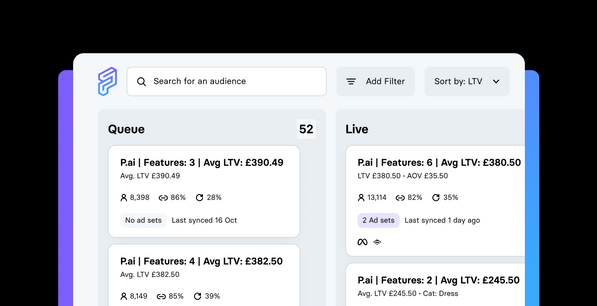Two simple tasks you need to complete now
Extracting value from first party data is probably a task sitting somewhere in your backlog, but you may be surprised to find out that you are not collecting some vital data points.
Many of our clients only discover this after they have decided to make an investment in Data Science, meaning they have to wait months, or even years, before they have all the required data to execute sophisticated, AI-powered acquisition & retention strategies.
Google Analytics provides a wealth of insights, but when you come to make systematic use of this data; you’ll find it’s impossible to download (or even create) custom reports which provide user or cookie level history. For any developers reading this: the same goes for the API.
The good news is you can do some easy things to change this; but it will not take effect retrospectively. First you will need to set up two Custom Dimensions, then you’ll need to add a few lines of code your website to collect the data.
Step 1
The two pieces of information needed are the Client ID and a User ID:
- Client ID: This is an ID assigned by Google to each cookie (i.e. device)
- User ID: This is an ID assigned by you to any logged in user (normally a customer number), as such it is the same across all the user’s devices
A Custom Dimension needs to be created (through the Google Analytics web interface or API) for each. You will need to choose the ‘scope’ of each dimension, which can be: Hit, Session or User.
- Hit scope: the data must be available for each hit (so if the user logs out, the User ID will no longer be captured)
- Session scope: Google will fill in any gaps with data collected in the same session
- User scope: Google will use their identity graph to match data across devices
The User scope will give the best data capture, but you will need to check your user agreements and disclaimers to make sure you are compliant with relevant regulations. N.B. User ID may also need to be enabled in Google Analytics.
Step 2
You will then need to make some additions to the Google Analytics tags on your website so that the Client and User IDs are collected. How to do this is beyond the scope of this article, but I can recommend this and also this excellent blog for some pointers.
With these basic things being collected, you’ll take control of your first party data and unlock the ability to leverage many modern AI techniques. Don’t stop there though, the more information you collect and log about the products and user behaviour on each web page, the more powerful this will be.
As an example, we find that when predicting conversion — some of the most powerful features are browsing behavioural patterns. So act today and do not leave this vital data out of any future Data Science models you adopt.



